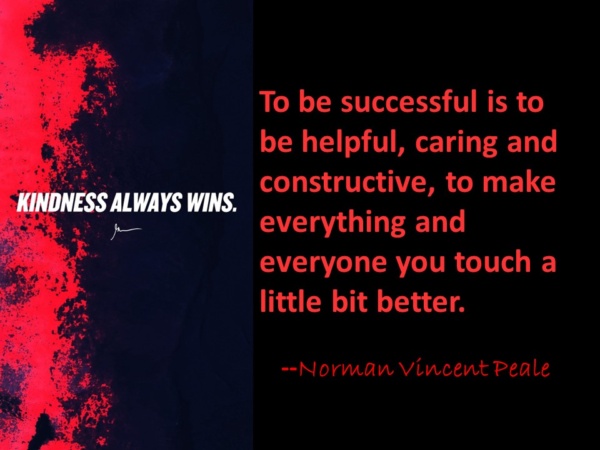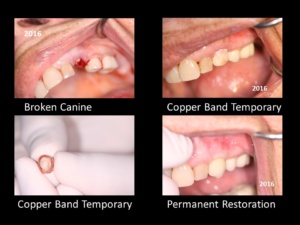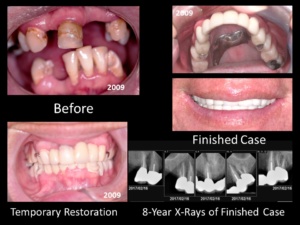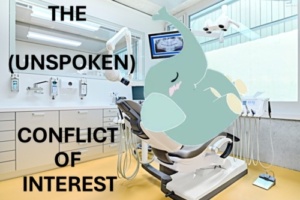
On Being a Doctor
I became a doctor to help people. I believe strongly that being a doctor means dedicating your life for service to others. Doctors have a special calling to ease suffering. “Doctor” comes from a Latin word meaning “teacher.” As a Doctor of Dentistry, it is my duty to educate patients about dental health—how they can best achieve it and maintain it.
Patients expect more of doctors than other professionals. They depend on their doctors to do right by them, and they cannot possibly evaluate the care that they are getting. In fact, the parameters on which they evaluate doctors are, for the most part, superficial and have nothing to do with the actual outcome. I believe strongly that doctors must never betray the blind trust of patients. They cannot, in good conscience, look the other way in the name of economics.
I have always been there for my patients. I would go to the office on weekends and evenings to help patients with emergencies, even when it was inconvenient for me. I have always considered a broken front tooth to be an emergency because I would not want to walk around with a broken front tooth. The Golden Rule—treat others how you would like to be treated–has always been my yardstick for right course of action. However, I do not see many practitioners today who consider a broken front tooth to be an emergency. They have no problem with allowing their patients to walk around with a missing tooth while they are waiting for the next available appointment.
I vividly remember one evening when my father and I were in practice together. It was about 10 o’clock at night when a patient called in pain.. I answered the call, but unbeknownst to me, my father also answered the call. So, we both showed up late at night to help this patient. How surprised we were to see each other! That patient was also surprised that both doctors came late in the evening to help her. She quickly realized how much we both cared about her, and that we were special. My Dad was a great mentor and he inspired me to follow his lead.
Recently I heard a story about an emergency patient with a lateral incisor fractured at the gingiva. This patient was turned away by his doctor. The reason? This patient did not have a good track record of paying for dental services. To make matters worse, he recently lost his job. He neglected to take care of the decay on his lateral incisor and the decay completely undermined the clinical crown so that it cracked off at the gingiva. This patient was told that he could not be treated at all unless he paid the entire amount on the spot for a permanent crown.
This practice does not reflect flatteringly on the doctor. Here is a human being—a nice guy who has to navigate socially and go to job interviews—and he was turned away over money! I have never in my life let a patient walk around without a tooth!
 I have the ability to make temporary restorations with copper bands that are extremely retentive for teeth that are flush with the gingiva. I can make them very quickly from scratch without models; and I teach dentists how to make these temporaries in the ONWARD program. I have made thousands of such temporary restorations in my career, and I can make them in well under an hour.
I have the ability to make temporary restorations with copper bands that are extremely retentive for teeth that are flush with the gingiva. I can make them very quickly from scratch without models; and I teach dentists how to make these temporaries in the ONWARD program. I have made thousands of such temporary restorations in my career, and I can make them in well under an hour.
I would have made this patient a copper band temporary restoration and inserted it with permanent cement. I would have set up the temporary restoration so that the endodontist could go right through it to access the root canal system. Instead of demanding a large fee up front I would have charged a nominal fee for the temporary restoration. Dental “insurance” companies, of course, do not pay for this. But I really would not have been upset if I was not paid, and I have, in fact, done a lot of pro bono work for patients because I wanted to help someone who was down and out. Such patients I believe are extremely appreciative and might end up being a great referral source.
During the course of my career, I have seen many patients go through cycles of hard times and prosperity. Should they not be treated at all when they are in a hard luck cycle? I think not! I want those teeth in good shape so that when they are ready to do the permanent work the teeth are there and they can be restored. How sad it would be to lose teeth before acquiring the financial means to restore them with ideal dentistry! And once lost, the out-of-pocket cost to restore missing teeth rises exponentially.
When I have that patient walk out with an esthetic anterior temporary it completely elevates his or her self-confidence and self-esteem. This elevation can translate to financial prosperity for both the patient and the doctor. That patient can go to a job interview and land a job without embarrassment. I receive as much pleasure from making these copper band temporaries for patients as from inserting a sophisticated precision attachment case.
A copper band temporary that is properly designed fits like a permanent restoration and prevents recurrent decay like a Mason Jar cover prevents food spoilage. Copper is extremely anti-bacterial, and I have had patients wear such temporaries for years with no recurrent decay. However, the materials are not permanent, and they ultimately break down. Temporary restorations must be replaced periodically if they are not going to be replaced with permanent restorations. The patient must come for regular hygiene visits so the dental team can keep a close watch on these temporaries. Each time replacement becomes necessary, the patient is charged. It is not long before the patient realizes that fabricating a permanent restoration is a lot less expensive in the long run than continually replacing the temporary restorations.
As doctors, I believe we are obligated to give something back since we have the privilege of making a nice livelihood in a great profession. When I was in practice in NY, I had an excellent office manager who had a daughter that applied to work as a dental assistant. She was very competent and a quick learner. Unfortunately, she was missing a lot of her teeth and was really embarrassed. She was taunted by people who thought she was low class or a homeless person. When a person doesn’t smile, it negatively affects personality and the perceptions of others. She was seen as an introvert–depressed and “austere.” But this is not who she truly was.

Certainly, I could not allow her to work with my patients with such a poor dentition. So out of respect for my amazing office manager, I made her daughter a precision attachment case gratis. Her case was one most rewarding for me. The office manager’s daughter turned out to be an excellent dental assistant. And whenever I treatment planned a patient for a precision attachment case, she showed the patient her case. That patient accepted the treatment plan on the spot. Best money I ever spent–and I more than made up for the funds that I laid out for her case. But the reward of helping a human being and completely changing a life is priceless. I believe that the good that you do for others always comes back to you.
Steeped with a piecemeal approach to dentistry, many practitioners quote fees for permanent restorations at the emergency visit. But I am not a pieceworker as I have an overall approach to patient care. I want to examine the entire mouth to verify that a single crown is actually the right treatment. I like to treatment plan the whole mouth for ideal dentistry first. If the patient is reaching financially and I try to arrange the treatment in phases that can be accomplished and charged separately, but still yield an ideal result as if the entire case was done at one time. I like to offer patients treatment choices—it is my job to educate them–and help them choose what is best for them.
Since I am a caretaker, I believe it is inappropriate to mix business with caretaking. So I never quote fees, although I do sometimes give out a ballpark figure. The business manager presents the exact fees and discusses the available options for financing. With today’s society, it is true that all fees must be paid in some way before any treatment is started. Alas, my father was able to start a case on a handshake. He allowed patients to pay however they wanted and still managed to do well. How the world has changed!
When a patient has an esthetic temporary, the patient is not pushed into treatment or obligated in any way toward permanent restorations. I believe strongly that patients must never be coerced into treatment. They should be able to take time to think and make an informed decision about what is right for them.
When treating patients, the golden rule always applies. How would you like to be treated if you presented with the same circumstances? It is only by the grace of God that you aren’t the one in the dental chair. Never forget that it is only by the grace of God that you have the privilege of helping others and that you aren’t the one who is down and out in your luck and in need of care.
Become the best practitioner in full coverage restorative dentistry that you can be! Don’t settle! Join the ONWARD program and learn how to do crown and bridgework with excellence and confidence, how to save “hopeless” teeth, and how to provide new options for patient treatment that you never thought of. Visit the website and join here: https://theonwardprogram.com/membership/
Dr. Feinberg is also available to give presentations. His CV and speaker packet is posted on the website. (https://theonwardprogram.com/about-dr-feinberg/) Dr. Feinberg can be reached at info@theONWARDprogram.com.



